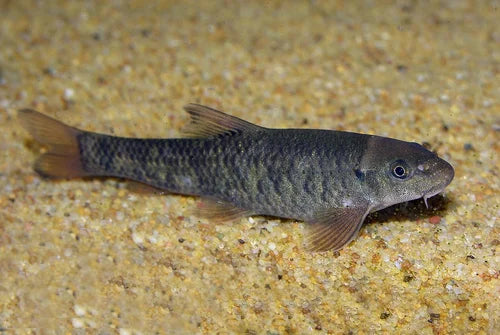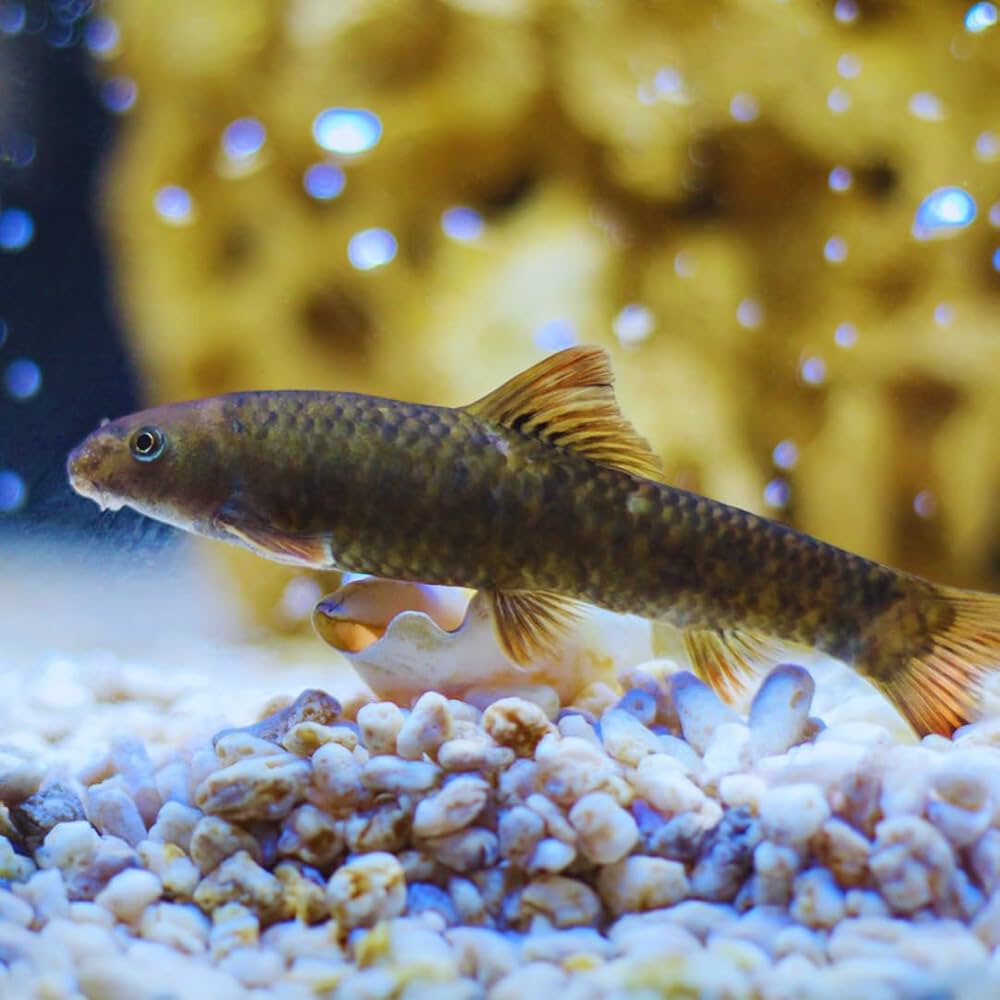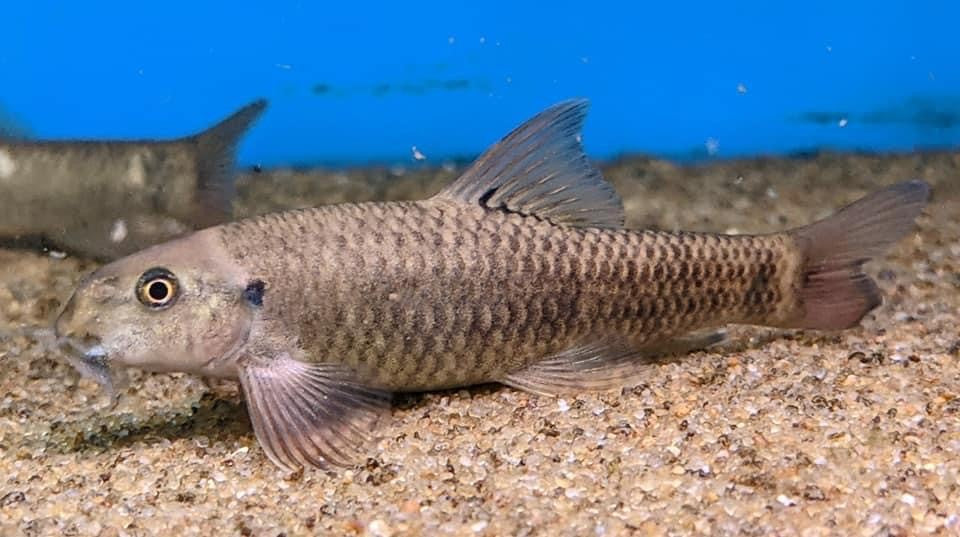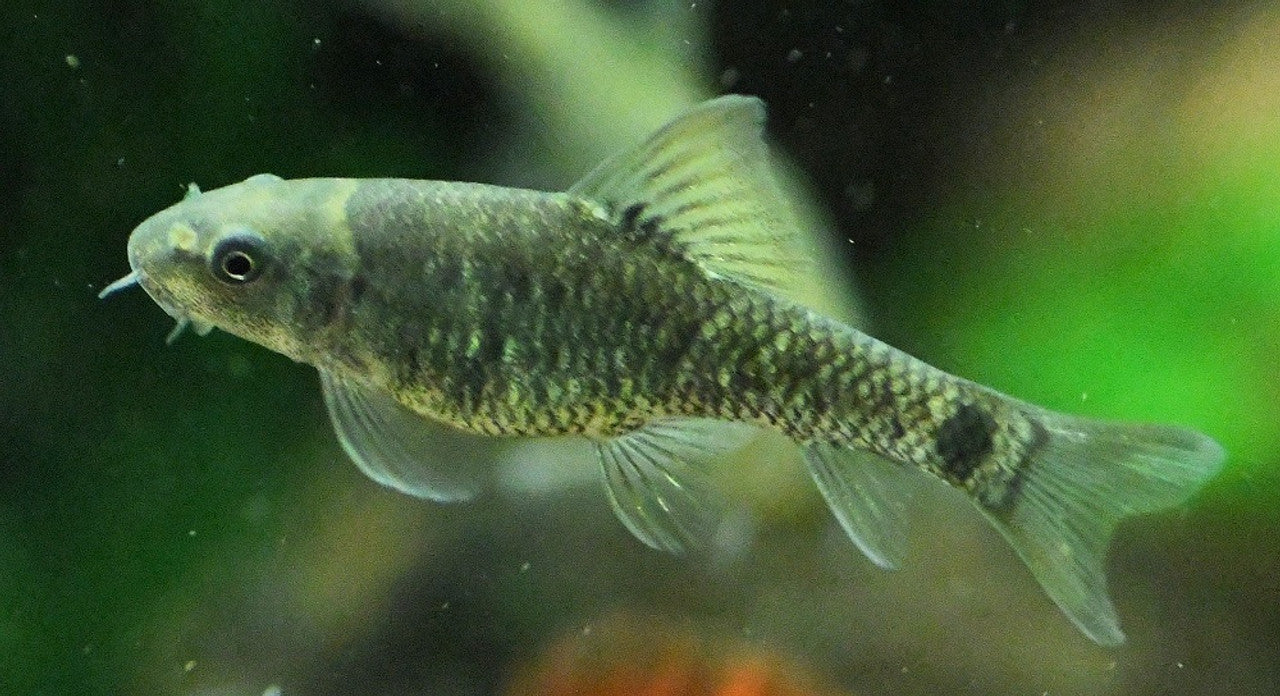Red Garra Rufa Algae Eater (Garra rufa)
Red Garra Rufa Algae Eater (Garra rufa)
Garra Rufa – Doctor Fish / Algae Eater
Scientific Name: Garra rufa
Common Names: Doctor Fish, Nibble Fish, Red Garra, Algae Eater
Size: 2.5–4 inches (6–10 cm)
Origin: Middle East – river systems of Turkey, Syria, Iraq, and Iran
Temperament: Peaceful, social, semi-active
Recommended Tank Size: 20+ gallons (larger for groups)
Water Conditions:
-
Temperature: 72–82°F (22–28°C)
-
pH: 6.5–7.8
-
Hardness: Soft to moderately hard (5–15 dGH)
The Garra Rufa, often known as the Doctor Fish, is a hardy and peaceful freshwater algae eater ideal for community tanks. With a torpedo-shaped body and sucker-like mouth, Garra Rufa graze on algae, biofilm, and leftover food—making them both functional and fascinating.
These fish are often kept in small groups, where their playful interactions and scavenging behavior bring life to the mid and bottom levels of the tank. Their subtle colors—ranging from silvery-gray to pinkish hues—can take on a deeper glow with good care and nutrition.
Fun Facts:
-
Famously used in "fish spa" treatments, where they gently nibble on dead skin (though this is not recommended in aquariums).
-
Unlike many algae eaters, Garra Rufa are sociable and thrive in groups of 3 or more.
-
They are great climbers—tanks should have tight-fitting lids!
-
Garra Rufa enjoy strong water flow and often rest in areas with high current.
Diet:
Omnivorous—primarily feeds on algae, biofilm, and sinking algae wafers. Supplement with blanched vegetables (like zucchini or spinach) and occasional protein like frozen bloodworms.
Compatibility:
Compatible with other peaceful to semi-active fish. Avoid overly aggressive or very large tankmates. Garra Rufa may show mild territorial behavior if kept solo.
Bring natural cleaning power and quirky personality to your aquarium with the Garra Rufa—a beloved algae eater and fascinating addition to any freshwater setup!
Product features
Product features
Materials and care
Materials and care
Merchandising tips
Merchandising tips
Share








